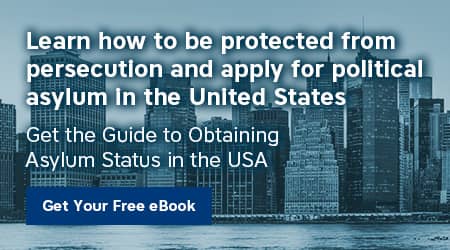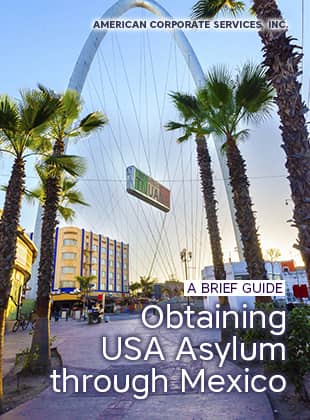We explained in an earlier article that refugees from the Asian continent mistakenly think that Guam might be a somewhat convenient backdoor into the United States. For many, it is a dead end.
The U.S. and Guam are in the midst of an immigration policy transition under the authority of the Department of Homeland Security. The transition period began in 2009 and will not be completed until the USCIS gains complete control after December 31, 2019.
So Near, Yet So Far
From the coast of Asia or its outlying islands, Guam looks like one small step for man that leads to one giant step to the U.S. mainland. Entering Guam illegally or with the overt reason of seeking asylum is likely to end up as a nightmare not at all like the dream of being greeted by open arms in the United States.
According to the USCIS, “People physically present or arriving to the CNMI are not eligible to apply for asylum. This includes people brought to the CNMI after being intercepted in international or U.S. waters . . . In most cases, individuals in the United States without a nonimmigrant status need to leave the country in order to obtain nonimmigrant classification.”
So Few Are Too Many
While it is not known for certain how many illegal immigrants are actually on the tiny 36-mile-long island, it has been estimated that some 2,000 were at one time at large, while another 500-plus were interred in a detention center. Many, if not all of those were housed in tents inside the gates of a local prison. There island simply does not have enough room or adequate resources to handle the influx of illegals along with its 140,000-plus legal residents.
Some Asians arrive under a legal visa, but overstay the visa period. At that point, they become illegal and are liable to end up detained or deported.
It’s Not an Easy Road
As long as there are no standard processing facilities on the island, applications for asylum are adjudicated by a judge in Hawaii, usually by video conference. It can take several years for applications to be approved, if they are approved at all. At any rate, no refugee asylum-seeker will be allowed to proceed to the U.S. mainland until their asylum status has been granted.
It turns out that Guam is neither a backdoor nor a shortcut.
What Should Asylum Seekers Do?
Immigration laws are complicated, the system is overtaxed, and the process is lengthy. For these reasons, we advise any person seeking asylum to speak with an experienced immigration attorney before attempting to apply to enter the process.
Our staff of multilingual immigration law Attorneys is available to help you navigate the asylum process. Contact us at www.Business-Visa-USA.com, www.Business-Visa-USA.cn, www.Business-Visa-USA.hk and www.Business-Visa-USA.ru.
As always, we welcome your input and discussions about immigration on our LinkedIn group: Business and Immigration News & Views https://www.linkedin.com/groups/8140530.
Note: Offer of services is not a guarantee of results. Every case is adjudicated on its own merits. We can help to determine your eligibility and direct you through the process.










